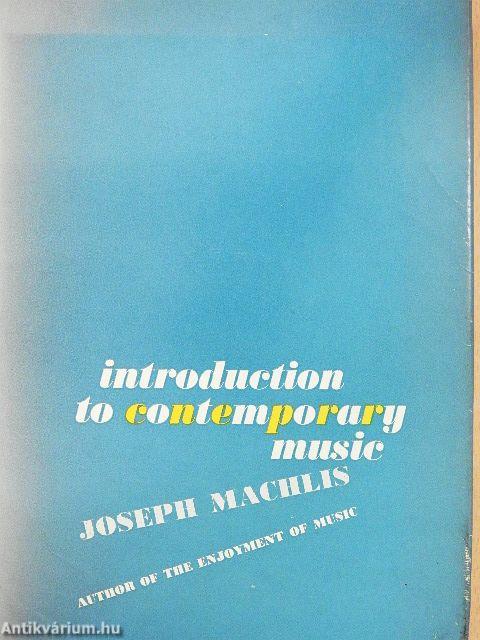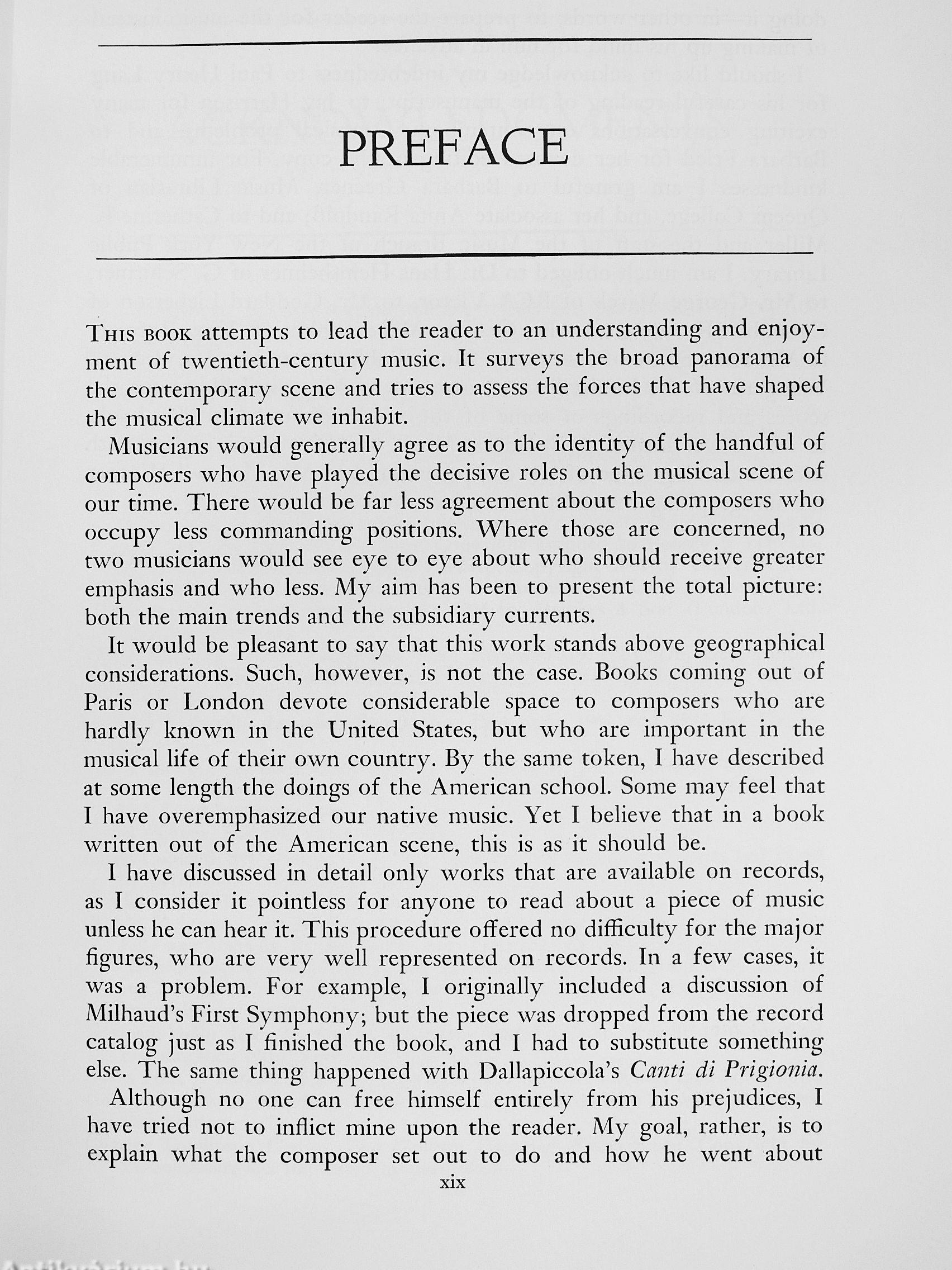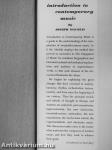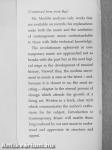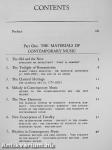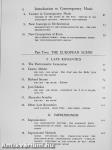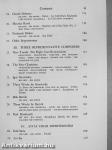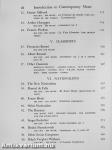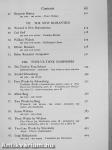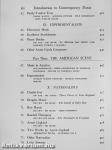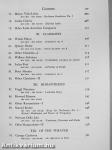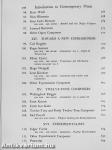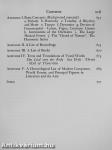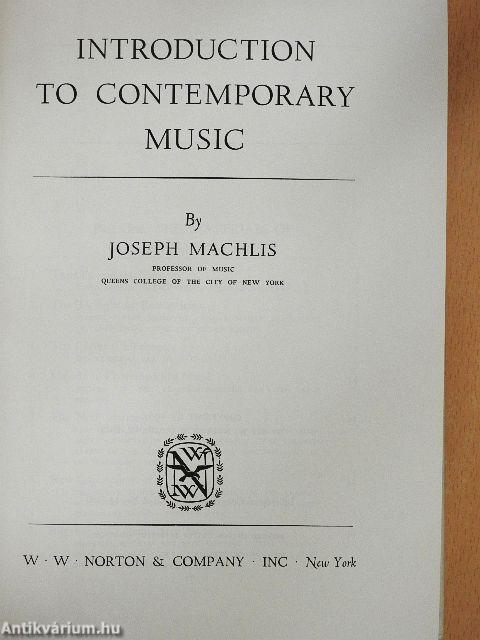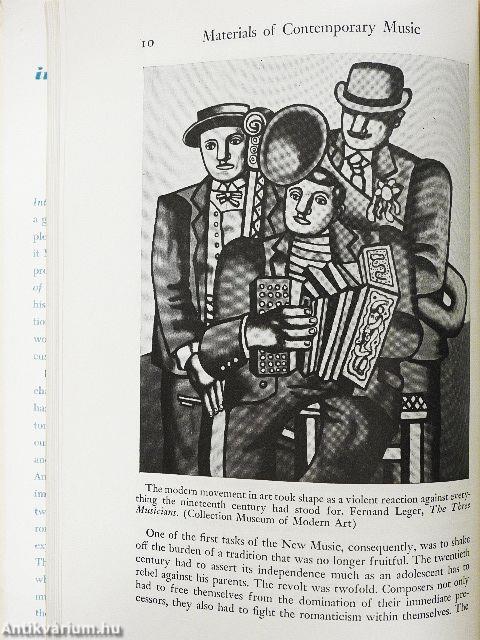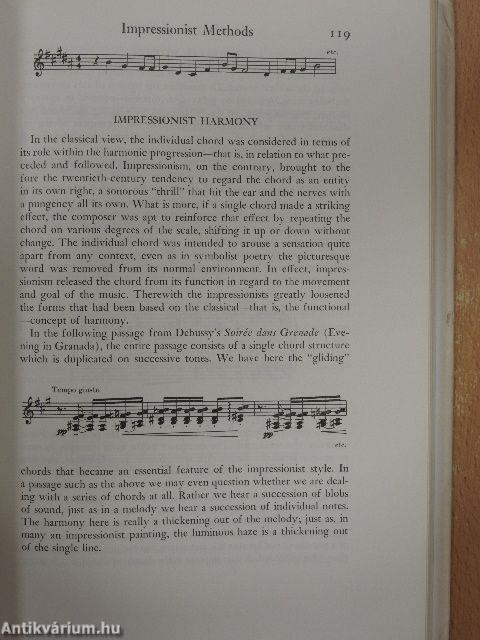1.104.827
kiadvánnyal nyújtjuk Magyarország legnagyobb antikvár könyv-kínálatát

VISSZA
A TETEJÉRE
JAVASLATOKÉszre-
vételek
Introduction to Contemporary Music
| Kiadó: | W. W. Norton & Company Inc. |
|---|---|
| Kiadás helye: | New York |
| Kiadás éve: | |
| Kötés típusa: | Vászon |
| Oldalszám: | 714 oldal |
| Sorozatcím: | |
| Kötetszám: | |
| Nyelv: | Angol |
| Méret: | 24 cm x 16 cm |
| ISBN: | |
| Megjegyzés: | Fekete-fehér illusztrációkkal, kottarészletekkel. |
naponta értesítjük a beérkező friss
kiadványokról
naponta értesítjük a beérkező friss
kiadványokról
Előszó
TovábbFülszöveg
I , -i j ' .r P ; /i
i i ! !ii i .'il ; I ! I .i M ;:
•i J'm 'i iV ¦ ¦ î
¦ N ••i'l ! ; ' .1;': t I.f
' • ' i
II
''Vf '^i'Vliin i.
¦I. H . 'i
I ¦¦ 'I
I ' ' ^ :
! j' i ' i ¦ ' i ¦ ' ' i ' : i;
M
I ;
il,;
' 1
iV v IP !iV,I
iniroduction ta canÉewtepawiBry
itBiëSëC
JOSEPH MACHLIS
Introduction to Contemporary Music is a guide to the understanding of the complexities of twentieth-century music. In it Mr. Machîis employs the method that proved so successful in The Enjoyment of Music: he combines biographical and historical material with technical explanations and analyses of representative works, so that each element of the discussion illuminates the others.
He begins by explaining the great changes that have occurred in melody, harmony, rhythm, orchestration, texture, tonality, and form since the beginning of our century. Then the principal trends and schools of thought in Europe and America are analyzed: post-romanticism, impressionism, the new classicism,... Tovább
Fülszöveg
I , -i j ' .r P ; /i
i i ! !ii i .'il ; I ! I .i M ;:
•i J'm 'i iV ¦ ¦ î
¦ N ••i'l ! ; ' .1;': t I.f
' • ' i
II
''Vf '^i'Vliin i.
¦I. H . 'i
I ¦¦ 'I
I ' ' ^ :
! j' i ' i ¦ ' i ¦ ' ' i ' : i;
M
I ;
il,;
' 1
iV v IP !iV,I
iniroduction ta canÉewtepawiBry
itBiëSëC
JOSEPH MACHLIS
Introduction to Contemporary Music is a guide to the understanding of the complexities of twentieth-century music. In it Mr. Machîis employs the method that proved so successful in The Enjoyment of Music: he combines biographical and historical material with technical explanations and analyses of representative works, so that each element of the discussion illuminates the others.
He begins by explaining the great changes that have occurred in melody, harmony, rhythm, orchestration, texture, tonality, and form since the beginning of our century. Then the principal trends and schools of thought in Europe and America are analyzed: post-romanticism, impressionism, the new classicism, twentieth-century nationalism, the new romanticism, the twelve-tone school, the experimentalists, and electronic music. This discussion makes clear to the reader what motivates the composers of modern music, and how they work to achieve their goals.
[Continued on back flap]
[Continued from front fiap]
Mr. Machlis analyzes only works that are available on records; his explanations make both the music and the aesthetics of contemporary music understandable to those with little technical knowledge.
The revolutionary upheavals in contemporary music are approached not as breaks with the past but as the next logi= cal steps in the development of musical history. Viewed thus, the modem movement in music is seen as the latest — and, because it is closest to us, the most exciting — chapter in the eternal process of change which attends the growth of a living art. Written in a fresh, clear style which communicates the author s enthusiasm for his subject. Introduction to Contemporary Music will enable those long confused by our new music to understand and appreciate its structure and appeal Vissza
Témakörök
- Idegennyelv > Idegennyelvű könyvek > Angol > Művészetek > Zene
- Művészetek > Zene > Komolyzene > Korszakok > Romantika
- Művészetek > Zene > Komolyzene > Zenetörténet > Külföldi
- Művészetek > Zene > Komolyzene > Zenetörténet > Magyar
- Művészetek > Zene > Komolyzene > Idegen nyelv > Angol
- Művészetek > Zene > Komolyzene > Korszakok > XX. század > Külföldi > Zeneszerzők
- Művészetek > Zene > Komolyzene > Korszakok > XX. század > Magyar > Zeneszerzők
Joseph Machlis
Joseph Machlis műveinek az Antikvarium.hu-n kapható vagy előjegyezhető listáját itt tekintheti meg: Joseph Machlis könyvek, művekMegvásárolható példányok
Nincs megvásárolható példány
A könyv összes megrendelhető példánya elfogyott. Ha kívánja, előjegyezheti a könyvet, és amint a könyv egy újabb példánya elérhető lesz, értesítjük.



